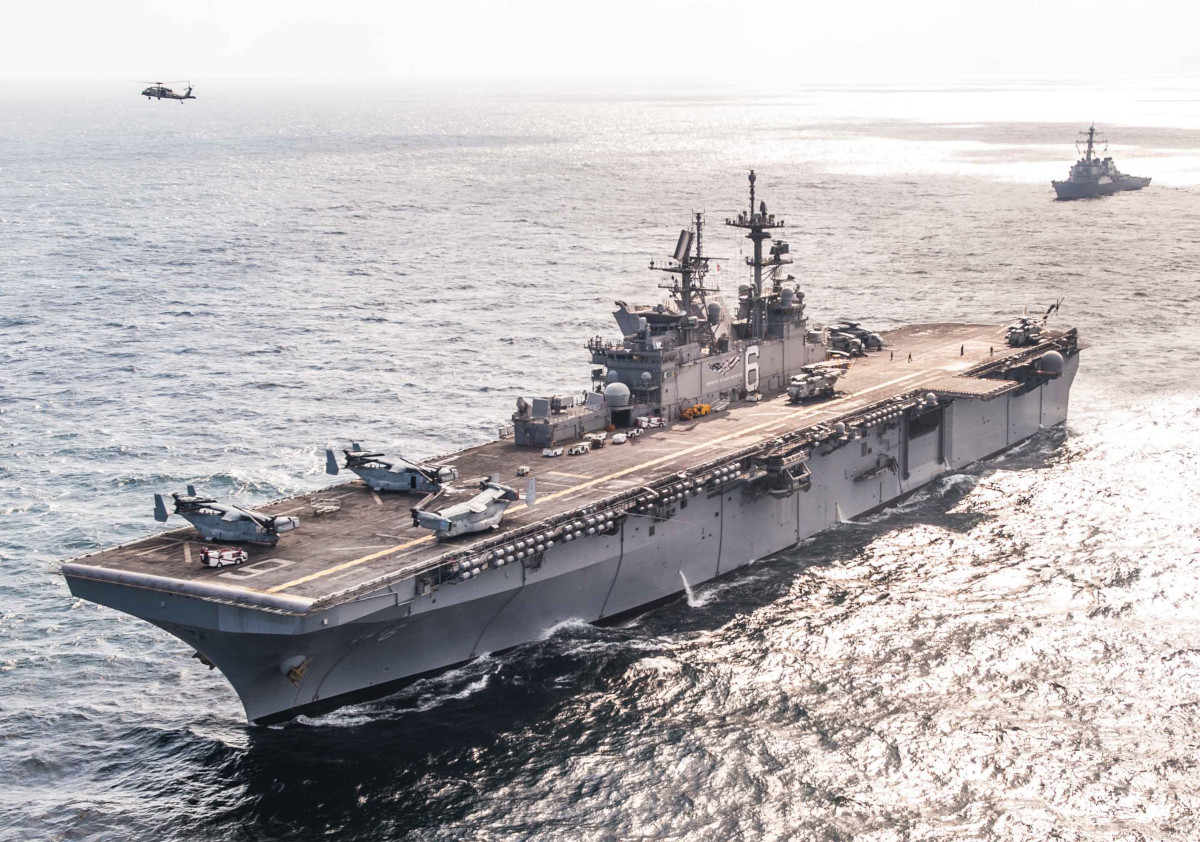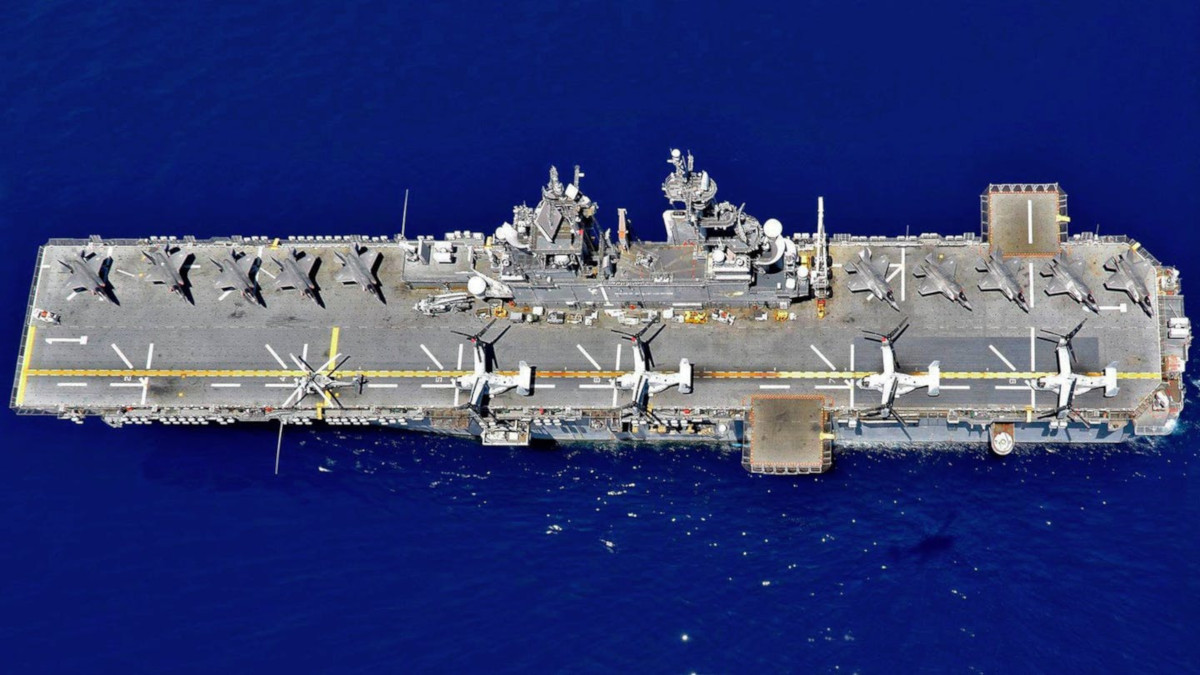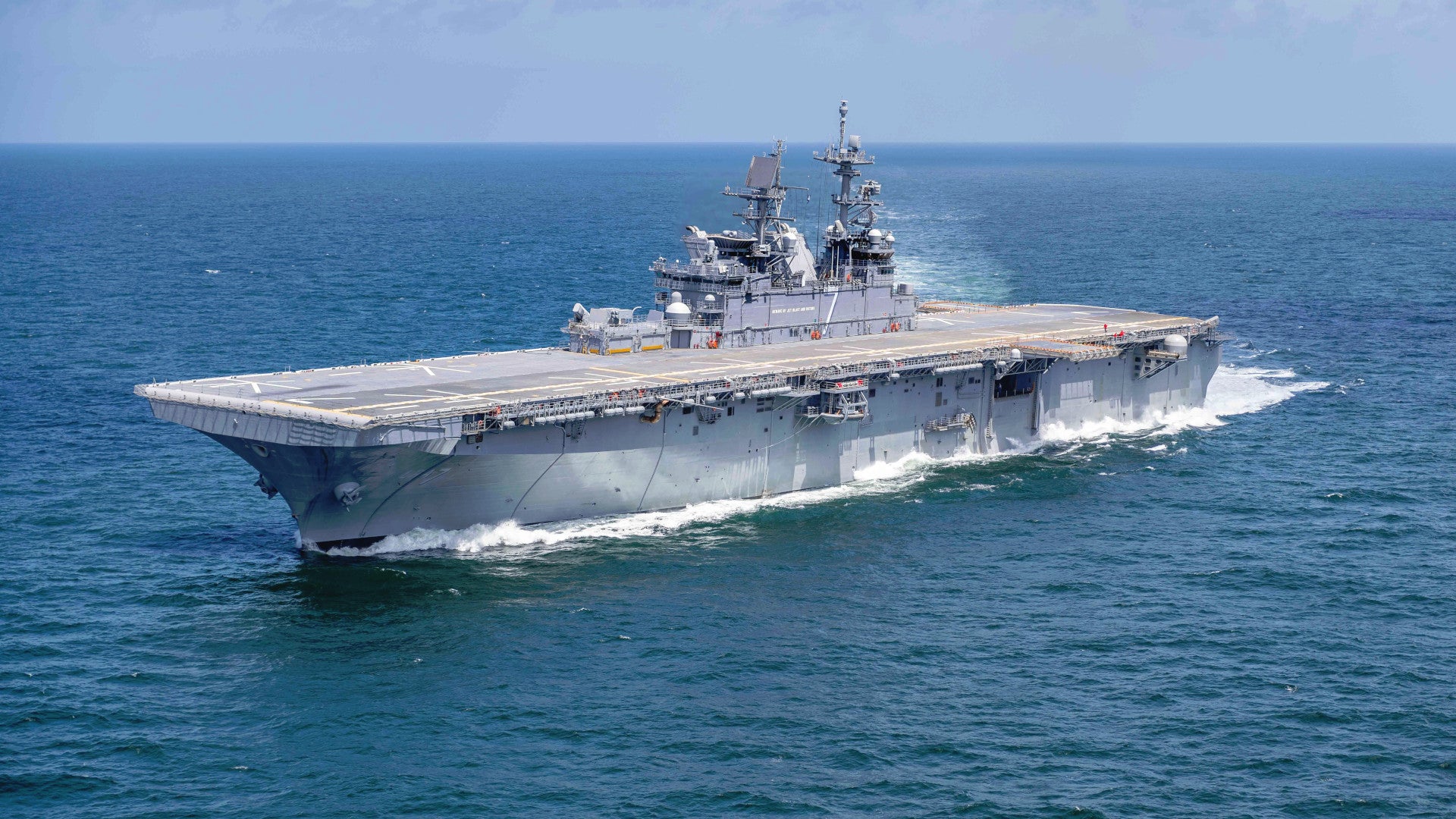Huntington Ingalls Industries had revealed that it will deliver the next America class amphibious assault ship, the future USS Tripoli, to the U.S. Navy later than expected, with the commissioning date potentially getting pushed back into 2020. The shipbuilder cited unspecified technical difficulties as the reason for the delays.
Mike Petters, Huntington Ingalls Industries’ (HII) CEO, made the announcement in a quarterly earnings call with reporters on Aug. 1, 2019. The Navy had planned to commission the future Tripoli, which completed builders trials in July, some time this fall, but this will now not occur until the very end of the year, at the earliest. HII launched the ship in 2017 and had delivered the first-in-class USS America to the Navy three years earlier.
“The systems are working today. It’s just a question of whether they will work for the life of the ship,” Petters explained, according to USNI News. “We’re working through a couple of technical design issues that we’re working and discussing with the Navy about.”
Petters added that HII was in talks with the Navy about whether or not all of the deficiencies need to be resolved before commissioning. He declined to give any details about the issues specifically.

“We think that’ll come to a resolution around the end of the year, and predicting whether it’s the end of this year or the beginning the next year, we don’t want to put up sort of any extra pressure on that,” Petters continued. “We want to resolve that the right way.”
The Navy made no mention of any possibility of a delay in commissioning when it announced the future Tripoli had finished builders trials on July 19, 2019. “The Navy and industry team did a commendable job this week,” Tom Rivers, the Amphibious Warfare Program Manager within the service’s Program Executive Office Ships said at the time.
That HII has specifically framed the reason for the delay as “technical design issues,” rather than, say, quality control problems, further raises the question about whether these deficiencies might be related to past difficulties with the first-in-class USS America and whether that ship might still suffer from similar problems years after formally entering service. In its review of developments relating to the America class in the 2018 Fiscal Year, the Pentagon’s Director of Operational Test and Evaluation (DOT&E) did highlight a number of remaining issues with USS America, which is also known by its hull number LHA 6.

“Operational testing demonstrated that LHA 6 is effective at supporting some Marine Corps missions, but testing was not adequate to demonstrate effectiveness at supporting the full Marine Corps range of operations,” the report, which DOT&E published in March 2019, said. “The movement of marines, cargo, and vehicles executed during testing was insufficient to generate a realistic operational tempo required by the Operational Test Agencies for an adequate operational test.”
One of the core questions that remains is about whether America and the future Tripoli will be able to support the operations of a full complement of 20 F-35B Joint Strike Fighters (JSF). “The Navy will not complete the operational evaluation of the ship’s ability to support a complement of 20 F-35B JSF aircraft until 2021,” DOT&E reported in March. The Navy has conducted evaluations with smaller numbers of F-35s.

This is a major issue since these two America class ships lack the well deck found on past Navy classes of amphibious assault ship and is focused primarily on aviation operations, including those involving the F-35B. The third America class ship, the future USS Bougainville, features a significantly revised design that includes a well deck and will form a subclass unto itself. The War Zone has previously examined the differences in the America class subvariants and their associated concepts of operation in depth.
In addition, previous tests identified cybersecurity vulnerabilities in a number of unspecified networked systems on America, which DOT&E has said “could adversely affect operational effectiveness in a cyber-contested environment” in the past. Beyond that, the Navy has not completed a required trial to assess how vulnerable the America class ships are to naval mines, an increasingly worrisome threat, particularly in the Middle East, as of September 2018.
Despite the issues, in 2017, America had left for her first operational deployment, which included visits to the Western Pacific and the Middle East. In January 2019, the Navy also announced that it would forward deploy the first-in-class ship to Japan, where it could become the flagship of U.S. Seventh Fleet’s amphibious forces, taking the place of the older first-in-class USS Wasp, which would return the United States.

The delay in commissioning the future Tripoli also comes amid a spate of issues with other high profile Navy shipbuilding programs in recent years. The most notable of these has been the ongoing troubles with the first-in-class aircraft USS Gerald R. Ford, which continue to plague the ship and effectively prevent it from conducting any real combat operations, if necessary, in its present form, two years after its commissioning.
It remains to be seen how serious the technical issues with the future Tripoli actually are, as well as if they reflect larger deficiencies with the America class design. Hopefully, the delay in commissioning the ship will be relatively minor and HII will be able to resolve the outstanding issues quickly.
Contact the author: joe@thedrive.com
